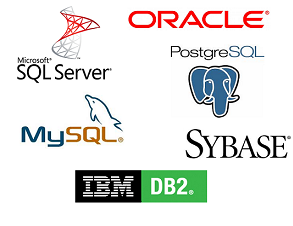
RDBMS, which stands for relational database management system, is a program that lets users create, update, and administer a relational database.
The relational database management system is the basis for SQL and for all modern database systems such as Oracle, MySQL, and Microsoft Access.
Structured in database tables, fields, and records, each RDBMS consists of database table rows and each one of the table rows consists of one or more database table fields.
But what is that all good for? Find out on the next page.
Because of its format, a RDBMS is powerful because it requires few assumptions about how data is related or how it will be extracted from the database, the result of this is that the same database can be viewed in different ways.
One of the important features of relational systems is that a single database can be spread across several tables, comparatively, a flat-file database sees each database self-contained in a single table.
A RDBMS creates indexes so that data can be quickly retrieved along with a virtual table creation where sensitive data can be stored and simplified query can be applied.






